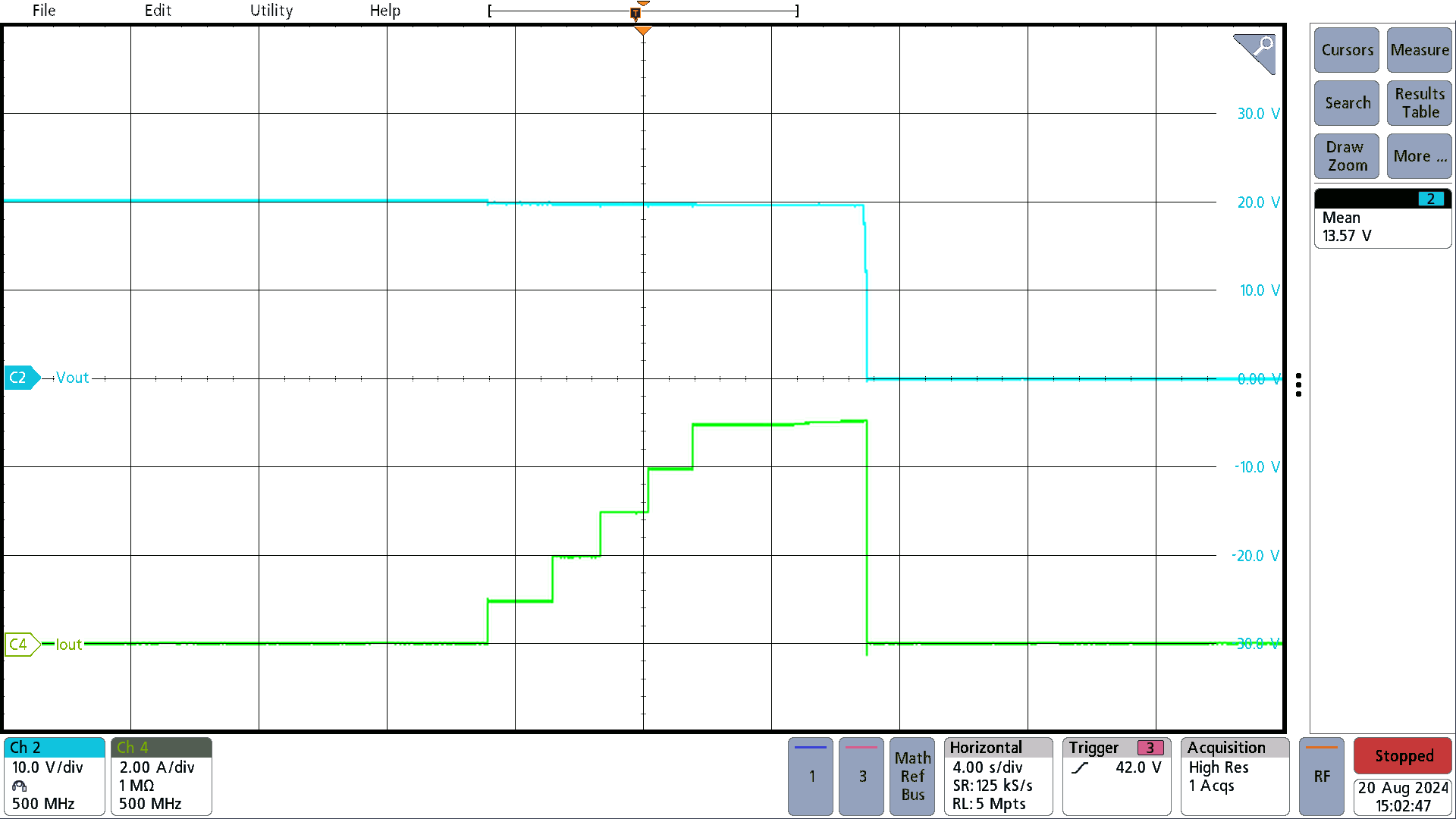TIDT407 October 2024
3.7 Overcurrent Protection at OTG Mode
Overcurrent protection was performed at USB Cable end and gradually increase current of E-load at 5V, 9V, 15V, 20V, 28V, 36V, 48V output voltage individually. See Figure 3-57 through Figure 3-63, at OTG mode. BQ25756 regulates the output with Constant voltage and constant current profile, once output current triggers the current limit, the output voltage goes to auto restart.
CH2: Vout, CH4: output current
 Figure 3-57 OTG mode, 50.4V battery,
Figure 3-57 OTG mode, 50.4V battery, 5V OCP = 3.3A
 Figure 3-59 OTG Mode, 50.4V Battery,
Figure 3-59 OTG Mode, 50.4V Battery, 15V OCP = 3.3A
 Figure 3-61 OTG Mode, 50.4V Battery,
Figure 3-61 OTG Mode, 50.4V Battery, 28V OCP = 5.1A
 Figure 3-63 OTG Mode, 50.4V Battery,
Figure 3-63 OTG Mode, 50.4V Battery, 48V OCP = 5.05A
 Figure 3-58 OTG Mode, 50.4V Battery,
Figure 3-58 OTG Mode, 50.4V Battery,9V OCP = 3.3A
 Figure 3-60 OTG Mode, 50.4V Battery,
Figure 3-60 OTG Mode, 50.4V Battery, 20V OCP = 5.1A
 Figure 3-62 OTG Mode, 50.4V Battery,
Figure 3-62 OTG Mode, 50.4V Battery, 36V OCP = 5.1A